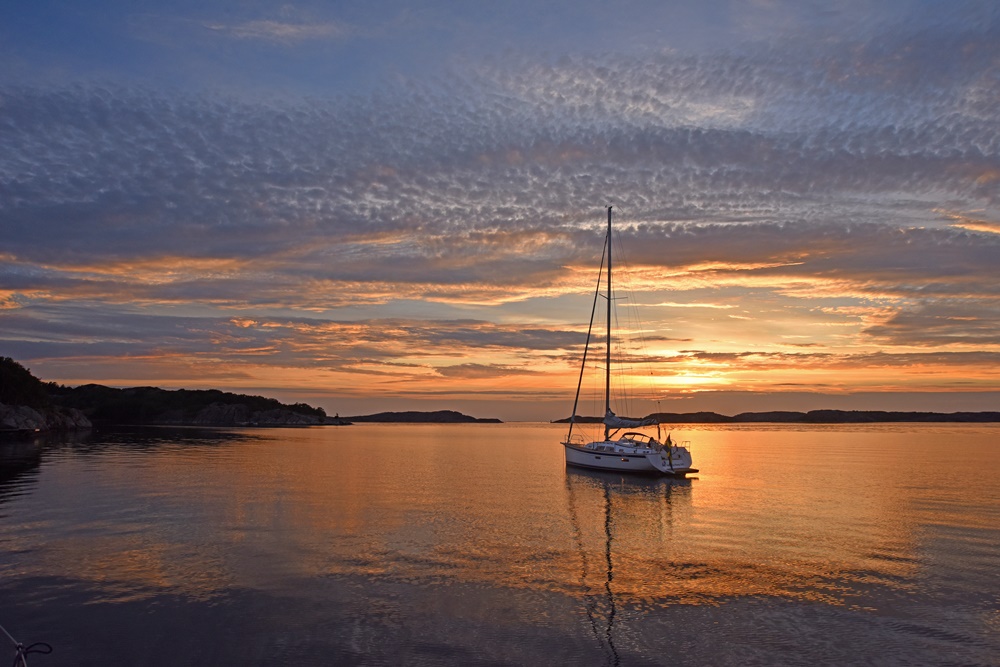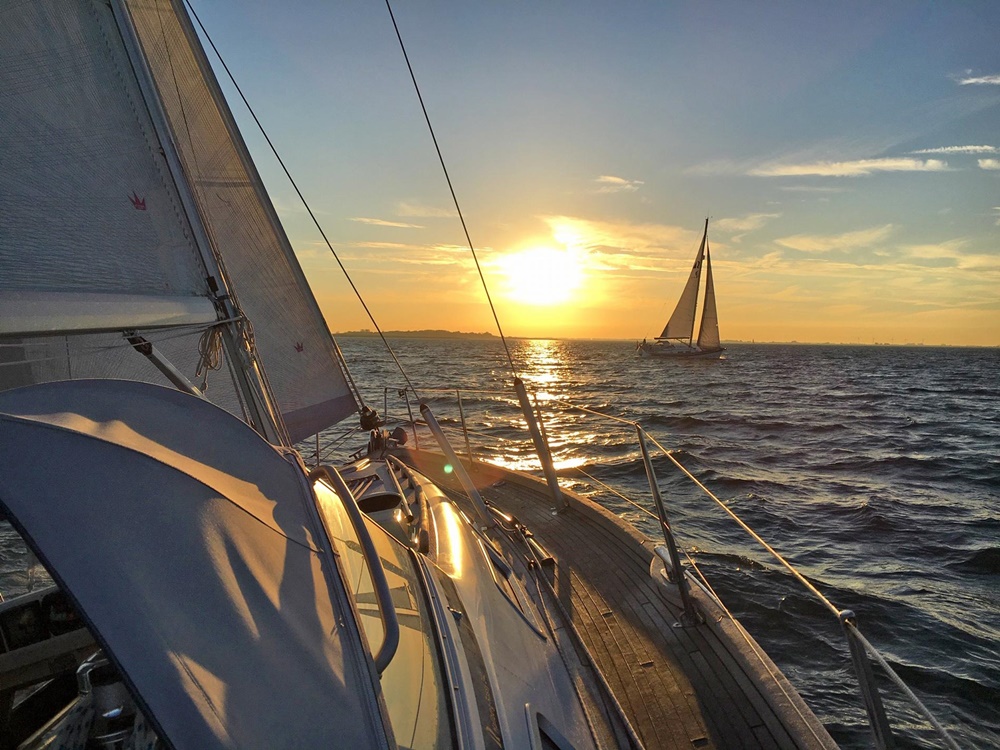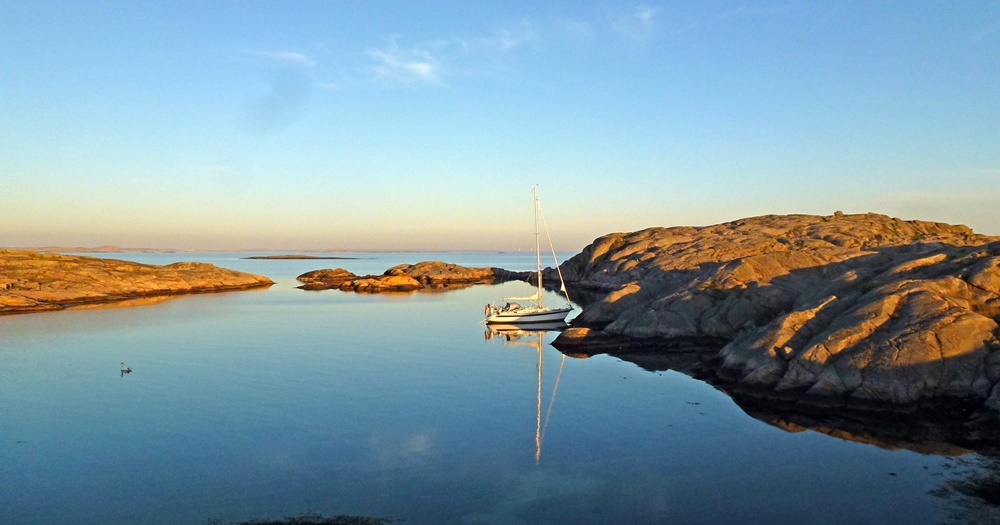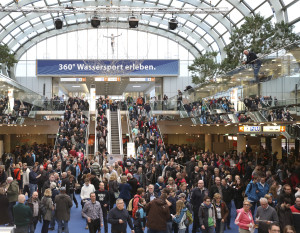Hallberg-Rassy 75 years

July 10 2017 Hallberg-Rassy 340 Photo: Rick Tomlinson
The roots of Hallberg-Rassy date back to 1943 in the heart of the Swedish archipelago. Harry Hallberg started his own business in a small scale in late 1943. This came to be Sweden’s leading sailboat builder, Hallberg-Rassy. Most people would think that there were two partners, Mr Hallberg and Mr Rassy, who worked together. That is not the case. In fact, Harry Hallberg from Sweden and Christoph Rassy from Germany never worked together.
Harry Hallberg, lived between 1914 and 1997, commenced his boatbuilding career as a boy of 14, constructing boats made of wood. The first boat to be built in a series was the Folkboat. Hallberg also had good success with Kungskryssaren. Both the Folkboat and Kungskryssaren were also built by other yards.
Harry Hallberg’s most distinguished contribution was his early understanding of the advantages of using GRP and to build boats in a series. In 1963 he was one of the pioneers in serial production of sailboats using GRP. He was the first successful builder of GRP hulls with wooden superstructure in a series. Hallberg early had export success, with many P-28s sold in the USA.
Christoph Rassy was born in 1934 and is still today an active yachtsman. He grew up in Bavaria in the south of Germany. He became an apprentice at a small yard for wooden boats. Soon he wanted to build and sail larger and finer boats and wanted to live by the sea. He had heard that Sweden was bound to build large and splendid boats. Consequently, he wrote to five Swedish boatyards, requesting work. Three didn’t reply, one said no and one yard wrote that they would welcome him, and in 1960 Christoph moved empty-handed and with a bicycle as his only possession to Nötesund, Sweden to build boats. During the day he built boats for a boatyard that has now been out of business for many years. To stretch his cash flow young Mr Rassy built boats for himself in his spare time. He raced these boats, won, and sold them at a profit. Soon Christoph Rassy wanted to strike out on his own. This coincided with a leading boat builder’s change of premises. This boat builder was Harry Hallberg. In the mid-60’s the yard at Kungsviken had become too small for Mr Hallberg and he built new premises in Ellös, 10 kilometers to the southwest on the island of Orust.

In the years of 1965 to 1972, Harry Hallberg and Christoph Rassy were competitors. The first boat that Christoph Rassy built in series was the “Rasmus 35”, designed in 1966. The first two boats were built entirely in mahogany and took one year each to construct. This boat was in many ways ahead of its time. It was a pioneer long distance cruiser with a powerful engine and a cockpit that was well protected by a windshield. This is a concept that has remained with the Hallberg-Rassy yachts to this day. In those days 35 feet was regarded as an enormous boat size. In addition, it was a sailing boat with a windshield, a combination never seen before. Today it is taken for granted on a good cruising boat.
Harry Hallberg retired in 1972. Christoph Rassy was looking for larger premises. In 1972 the Rassy yard in Kungsviken purchased Harry Hallberg’s yard in Ellös. As the Hallberg brand was by far the most well-known; the new company was named Hallberg-Rassy. Harry Hallberg and Christoph Rassy, however, have never been partners.
 The first new design under the name of Hallberg-Rassy was the Monsun 31, developed in 1973. The boat proved a great success, and 904 were built up to 1982, the highest number of units built of any kind of Hallberg-Rassy to this date. To meet the demand the area of the yard was doubled in 1975.
The first new design under the name of Hallberg-Rassy was the Monsun 31, developed in 1973. The boat proved a great success, and 904 were built up to 1982, the highest number of units built of any kind of Hallberg-Rassy to this date. To meet the demand the area of the yard was doubled in 1975.
The Hallberg-Rassy 41 from 1975 was the first boat with a proper walk through in one level to the aft-cabin below deck. The 41 has a blue brim around the cockpit, which is slightly elevated, to give room for the passage below deck. The size of the boat and the outfitting was spectacular for its time; Pressurised water, heated water, shower, electric anchor winch, headsail furling system, two separate heads, and a powerful engine.
The Hallberg-Rassy 38, designed in 1976-77, was a trendsetter with the same interior concept as the 41, though a higher freeboard, and was the first boat with the characteristic Hallberg-Rassy blue stripe around the hull.

In 1983, 16-year old Magnus Rassy designed and built an experimental boat named “Rassker”. The hull was built in high tech aramid fibre and Divinycell. This was the first boat built at Hallberg-Rassy to feature an external lead keel and a stern with a bathing platform. The hull length was 26 ft and the boat won many races.
In 1985 two armchairs were built in to the saloon of a Hallberg-Rassy 49. This was something no one had seen on a yacht before. Now you can find similar solutions on boats built by yards all over the world, but no armchairs are as comfortable as the original ones by Hallberg-Rassy.
Already in 1987 Hallberg-Rassy installed its first computerised woodworking machine, a CNC-milling machine. Parts could now be cut with a previously unheard of precision and waste was minimized.

In 1988 Hallberg-Rassy began a successful co-operation with the most talented yacht designer of our time – Germán Frers (pronounced Herman Frers) from Argentina. This proved to be a game changer, combining the good old Hallberg-Rassy qualities such as sturdiness, comfort and fine wood-work, paired with Frers elegance and performance. This coupled with ease of handling gave a new range of yachts. This has since than been improved within the concept, year by year.
In 1993, Hallberg-Rassy started Open Yard (Öppet Varv in Swedish) in a small scale. This has through the years developed into Scandinavia’s largest and most important sailboat show.

When www.hallberg-rassy.com went online back in 1996, it was one of the very first web sites for any boat builder in Europe. Already then it was unusually extensive.
In 1996 was the first time a GRP boat came into a Swedish museum; the Hallberg-Rassy Monsun 31 “Golden Lady”, after three and a half circumnavigations. The Swedish sailor Kurt Björklund donated his boat to the maritime museum in Råå in southern Sweden.
In 1998, a separate company was founded, to deal with original Hallberg-Rassy spare parts and accessories. Today six people are working full time at Hallberg-Rassy Parts specializing in spare parts and accessories.
In 2005, Hallberg-Rassy was honoured with its own street name: Hallberg-Rassyvägen, in English: – The Hallberg-Rassy Street
Since 2011 Hallberg-Rassy has a very active Facebook account with over 48 000 followers, and since the fall in 2013 there is a popular Instagram account with over 33 000 followers.
In August 2012 a Hallberg-Rassy 412 with in-mast furling won her category in Scandinavia’s largest and most demanding in-shore race, Tjörn Runt, with 46 boats participating in the group. And the 412 was the fastest boat both on actual time and after handicap. This was the first boat with FatFurl in-mast furling mainsail, a revolutionary sail with full roach and headboard. From now on it is possible to achieve the same speed and angle towards the wind as with a traditional mainsail that folds on the boom.
For 19 consecutive years Hallberg-Rassy has been the clear dream yacht among sailors. This is confirmed by an extensive market research arranged by Delius Klasing in Germany with many thousand people being asked 19 years in a row. The lead over number two on the dream yacht list is massive with several times as many people answering Hallberg-Rassy as the number two on the list, and that is the case for 19 consecutive years.
The latest models introduced in the last two years are the twin rudder 44, 340 and 57. They have all proved to be an instant and international sales success.
The Hallberg-Rassy concept has been developed, step by step, over the decades. Hallberg-Rassy has stayed true to the concept of sturdy craft, well protected cockpits, high endurance and more than respectable speed with a high degree of comfort. The Hallberg-Rassy concept means effortless and comfortable cruising.
Hallberg-Rassy is still 100 % family owned and family run. Hallberg-Rassy, since 2003, has been headed by the second generation; Magnus Rassy. Hallberg-Rassy has never suffered from financial troubles and is debt free. Every boat buyer may get a bank guarantee at low cost price. So far Hallberg-Rassy has delivered 9 400 yachts, on time, of which Frers designed 3 400.


